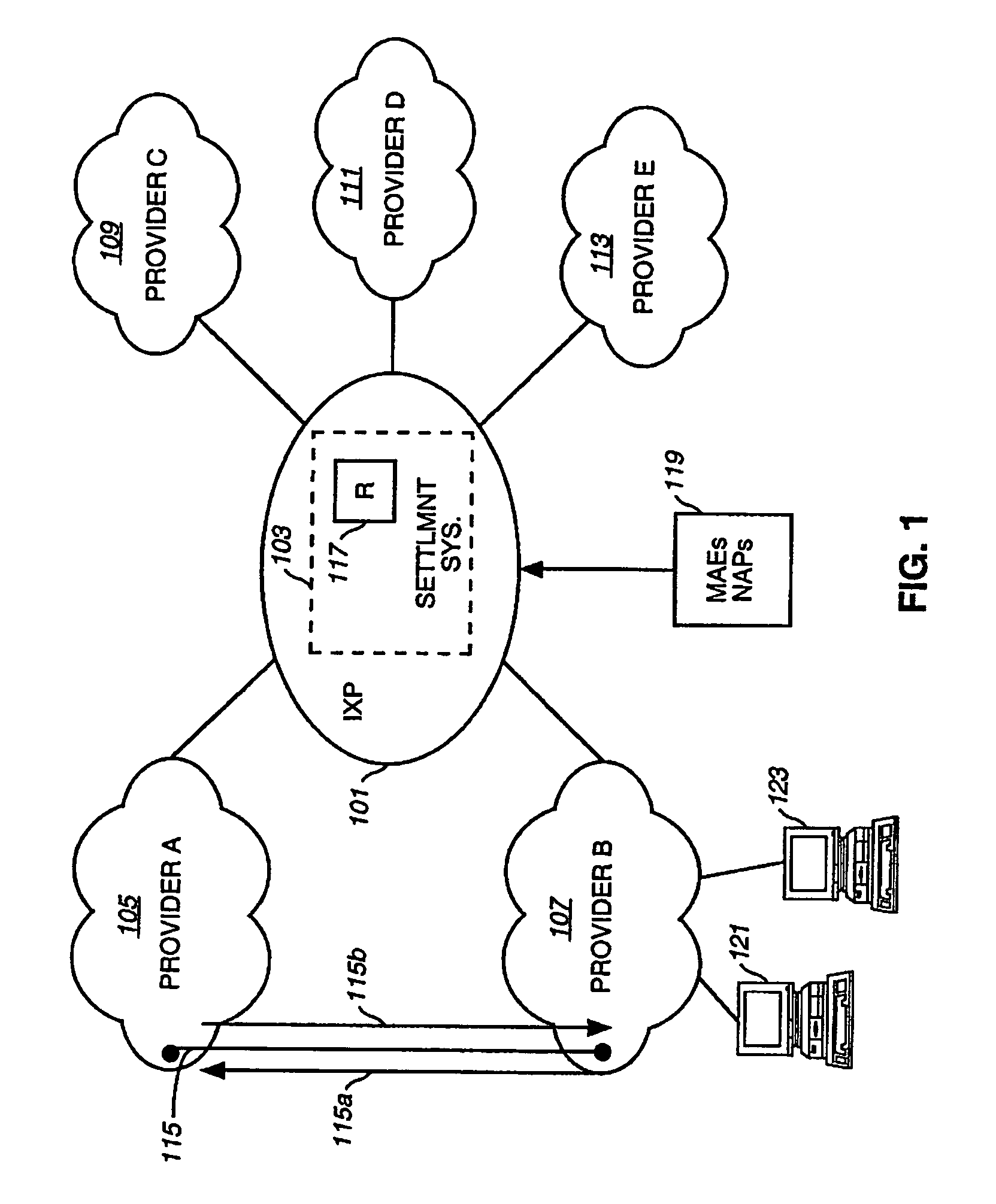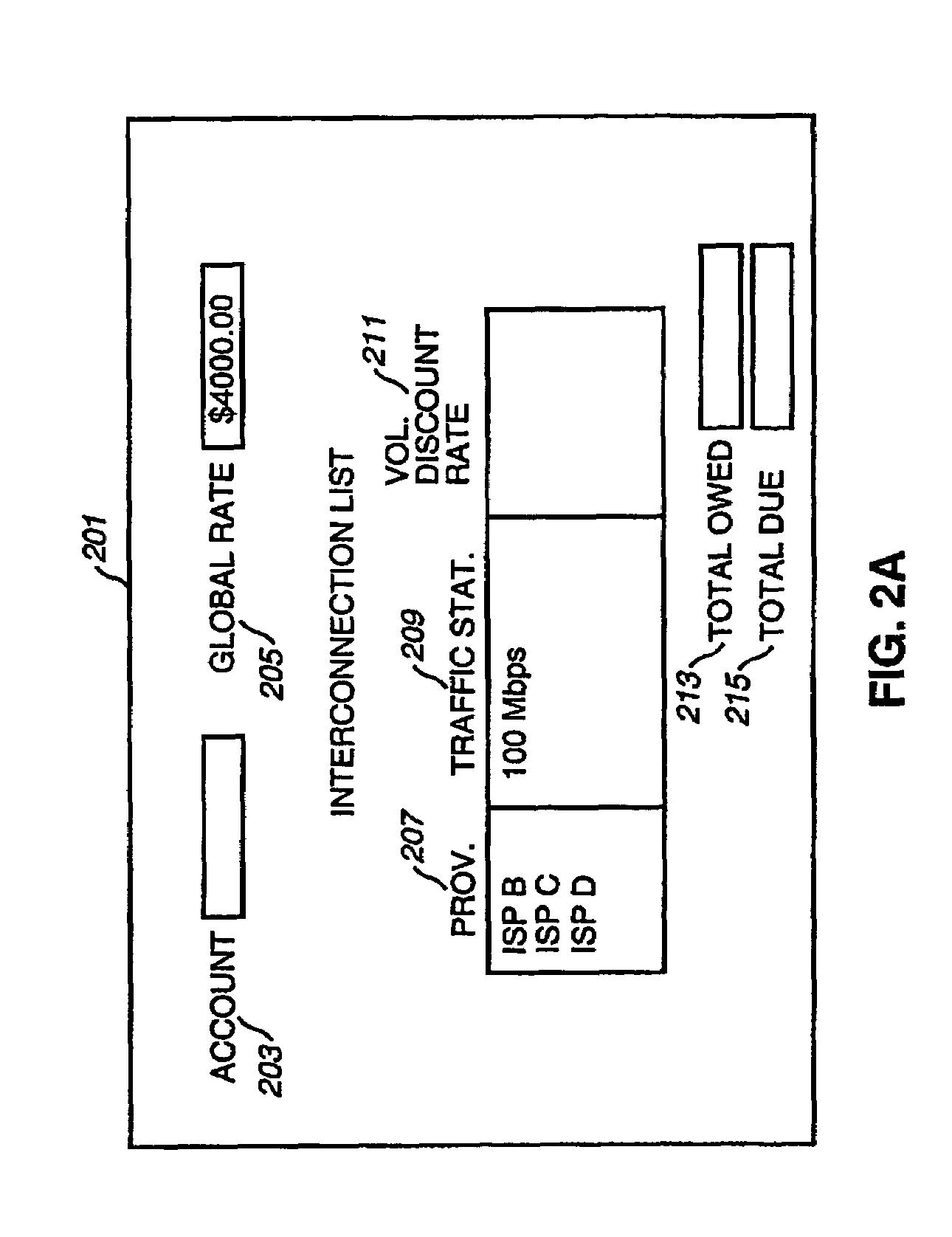Method and system for providing settlement of interconnected packet-switched networks
a packet-switched network and network settlement technology, applied in the field of data communication, can solve the problems of reducing the scale of the nap infrastructure, affecting the ability of the nap infrastructure to scale adequately, and reducing the “neutral” nature of the naps
- Summary
- Abstract
- Description
- Claims
- Application Information
AI Technical Summary
Benefits of technology
Problems solved by technology
Method used
Image
Examples
Embodiment Construction
[0051]In the following description, for the purpose of explanation, specific details are set forth in order to provide a thorough understanding of the invention. However, it will be apparent that the invention may be practiced without these specific details. For instance, repeated use of telecommunications-related products / services are used to provide a consistent exemplary industry application, but are in no way intended to limit the scope of the invention to applicability to only this industry since universal application to any other product / service arena is intended.
[0052]In some instances, well-known structures and devices are depicted in block diagram form in order to avoid unnecessarily obscuring the present invention. Although the present invention is discussed with respect to exemplary protocols, computer languages, and operating systems, the inventions can be implemented on any computer system regardless of protocols, languages, or operating system platform.
[0053]The presen...
PUM
 Login to View More
Login to View More Abstract
Description
Claims
Application Information
 Login to View More
Login to View More - R&D
- Intellectual Property
- Life Sciences
- Materials
- Tech Scout
- Unparalleled Data Quality
- Higher Quality Content
- 60% Fewer Hallucinations
Browse by: Latest US Patents, China's latest patents, Technical Efficacy Thesaurus, Application Domain, Technology Topic, Popular Technical Reports.
© 2025 PatSnap. All rights reserved.Legal|Privacy policy|Modern Slavery Act Transparency Statement|Sitemap|About US| Contact US: help@patsnap.com



